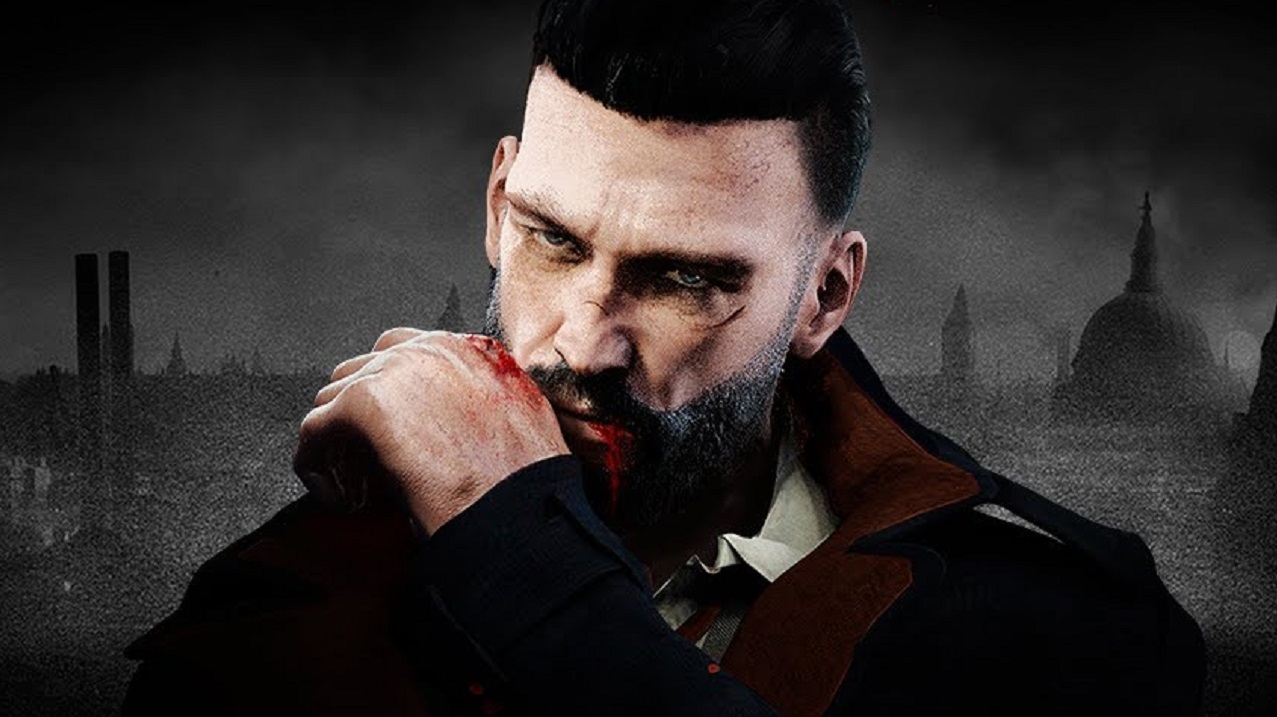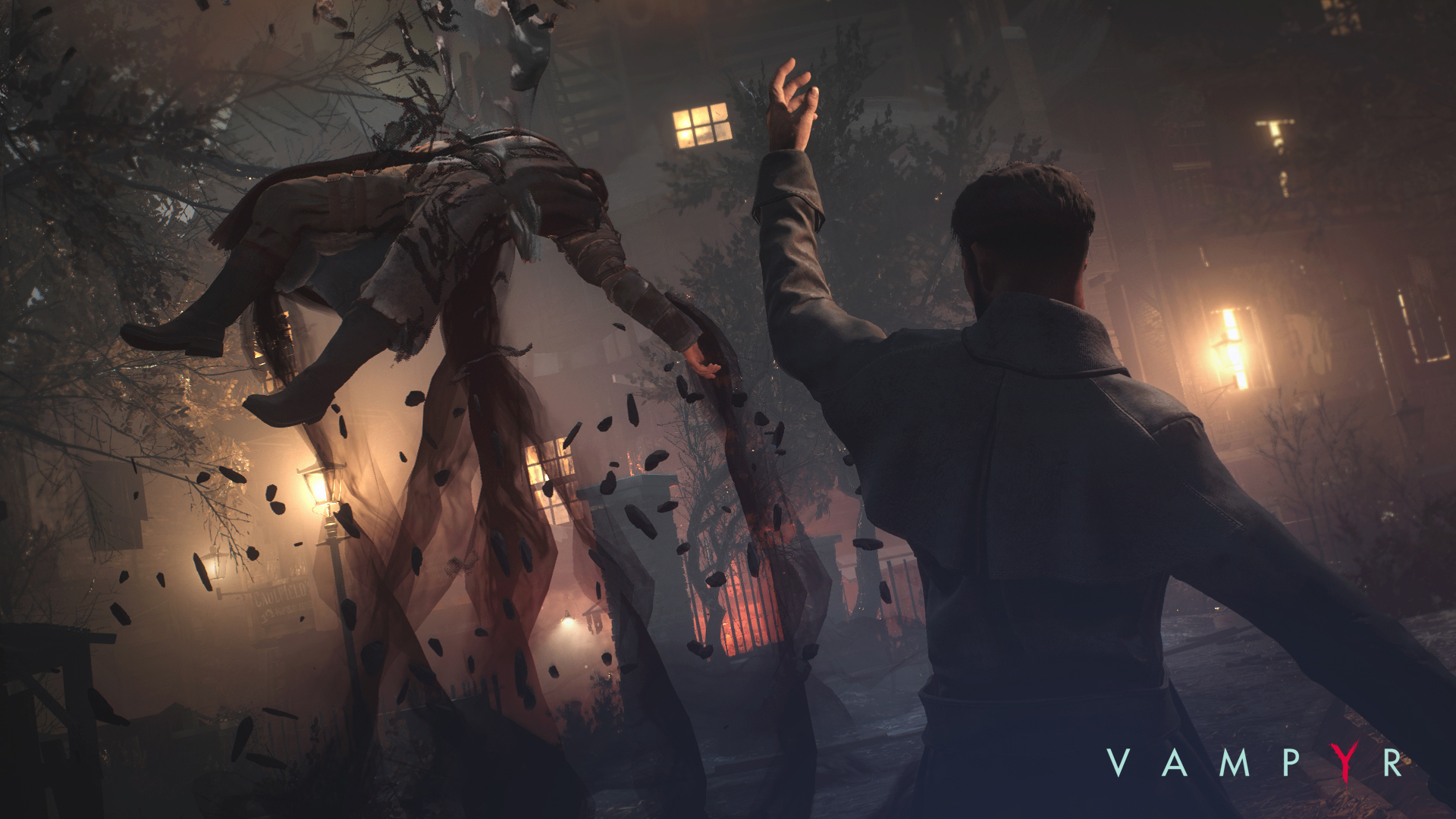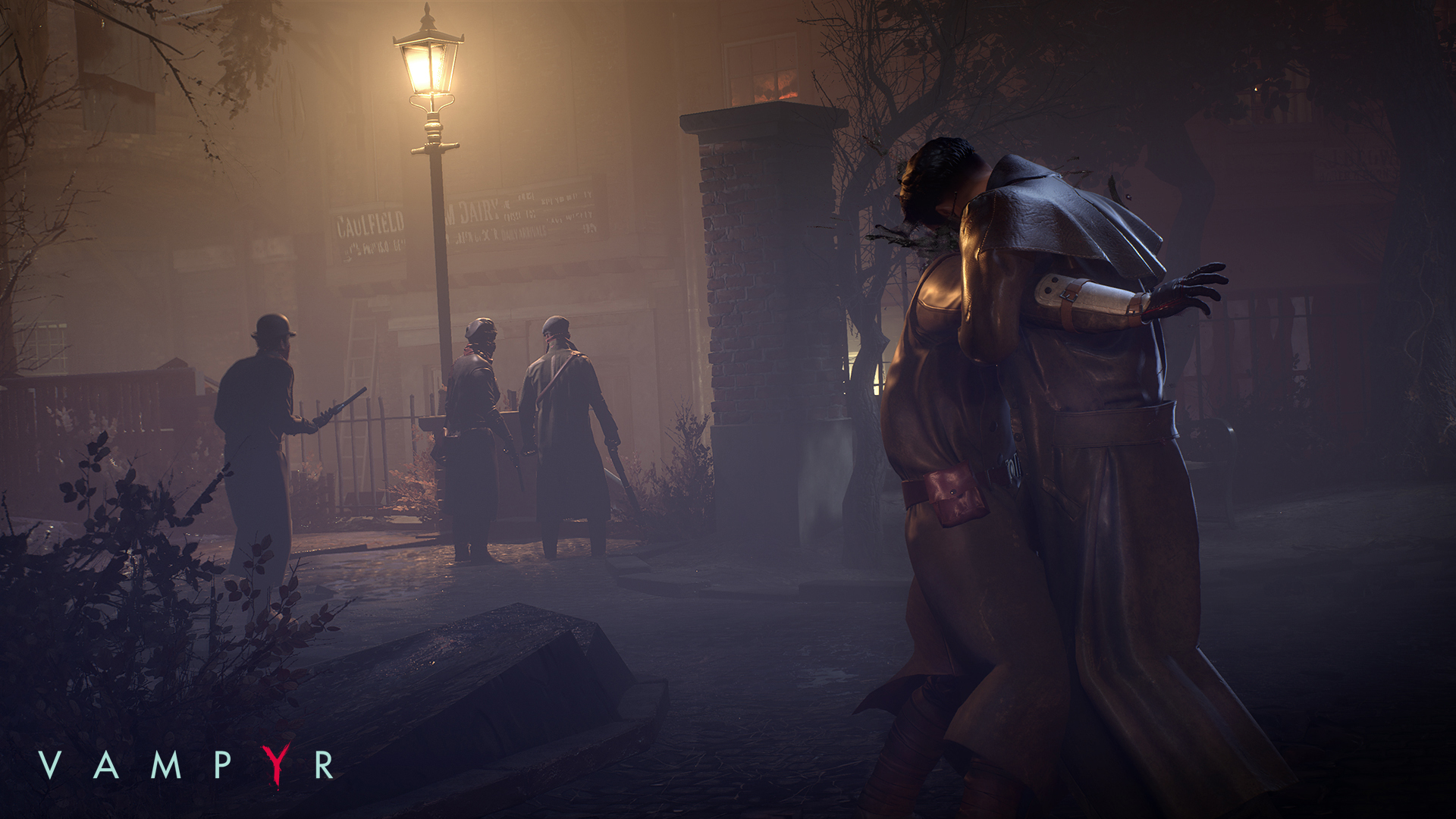Your choice of who lives or dies will radically alter London in Vampyr
The ambitious RPG from the makers of Life is Strange could become the seminal vampire game.

A lot of modern RPGs boast about the power of choice. They preach about how I get to shape the story, when in reality, that story is more like a rubber band—no matter how I try to contort and stretch it, it’ll always snap back into the same shape. But when Vampyr’s game director Philippe Moreau tells me that it’s possible to kill just about every NPC and condemn London to become a wasteland of diseased monsters, I have flashbacks to killing Caius Cosades in Morrowind—ending the main quest entirely.
Coming off a game like Life is Strange, Dontnod’s Vampyr is a wildly ambitious RPG. During E3, I got a chance to watch nearly 45 minutes of unscripted gameplay and the whole time I kept thinking “Wow, this sure does look like The Witcher 3 and Vampire: Bloodlines had a baby.” Trust me, I’m well aware that I just compared Vampyr to two of the most cherished PC games of all time. But stick with me here.
Bump in the night
Vampyr’s 1918 post-war London is a grim place to live. Wracked by the Spanish flu, the city is already on the verge of chaos. What threatens to push it over the edge are the reports of cannibalism and vampires stalking the streets. Dr. Jonathan Reid, the main character, is all too familiar with these reports. As a vampire, he’s partly to blame.
At the heart of Vampyr is the tension between Jonathan’s hippocratic oath to protect life as a doctor and his need to take it as a vampire. It isn’t just a thematic concept, but is woven into nearly every one of Vampyr’s various systems. During the demo, I was offered a fascinating look into how all of this is married with the story. It looks very promising.
The walkthrough begins in the hospital where Jonathan works. His boss, Dr. Swansea, is aware of his vampiric condition but isn’t going to report him to the guild of vampire hunters called The Guard who patrol the streets. We learn that the hospital was recently attacked and several of the patients are missing. To return order, Swansea asks Jonathan to find one of the missing patients.

It’s here that I notice just how alike Vampyr is to The Witcher 3. The third-person camera, the dour dialogue, vivid setting, and the fact that Jonathan has ‘vampire vision’ almost exactly like Geralt’s ‘witcher vision’ all evoke CD Projekt Red’s seminal RPG. That’s not a bad thing—who wouldn’t love to play another RPG as well realized as The Witcher 3?
After using Jonathan’s vampire vision to investigate the hospital rooms of the missing patients and glean some clues about their disappearance, we set out into the night to track one of them down.
The biggest gaming news, reviews and hardware deals
Keep up to date with the most important stories and the best deals, as picked by the PC Gamer team.
Vampyr's most exciting quality is the balancing act central to Jonathan’s story. Unlike most RPGs, there are no generic NPCs walking Vampyr’s dreary streets. Every person you see has a name, relationships, backstory, and associated quests. As a doctor, it’s your mission to try and protect these people from other vampires and the cannibalistic ‘skal’ who are starting to crop up in London’s seedier areas. But in order to do so, you’re going to have to feed on some of them to grow stronger.
In order for Vampyr to really succeed, it needs to weave those smaller stories both into the larger narrative of each district as well as Jonathan’s own personal arc.
Feeding too recklessly, however, has its own set of dire consequences. Each district has its own health bar, and by murdering the citizens or compromising their safety during quests, that district becomes more unhealthy. Early on, that might mean merchant prices go up or a side quest becomes unavailable because you’ve killed an important character. But feed too selfishly and the district will fall into utter chaos. Monsters will invade and kill everyone inside, closing the door on all of their stories and related quests. As Moreau stated, even if you abandon every district in London to this fate, you can still find ways to solve the main quest. It’s a captivating idea. I just hope Dontnod can actually weave it into Jonathan’s personal story in a meaningful and dramatic way.
To feed or not to feed
Sometimes the best moments in RPGs are when you get get wrapped up in a secondary objective separate from the main plot. While pursuing leads on the missing hospital patient, Jonathan encounters some powerful vampire hunters and Moureau explains that we’ll need to become more powerful if we hope to survive the fight. We shelve our main objective in order to look for a suitable victim to feed on.
In the docks district, we encounter Seymour, a rough-looking lad. Using our vampiric powers of persuasion, which is a learnable skill, we’re able to force him to open up to us so we can learn about him. One of Vampyr’s menus lists every character in London, logging information like who they are, who they’re related to, and their health. It’s a complex web of relationships that requires careful consideration when choosing who you should kill—their death could end up having some unforeseen consequences.
Fortunately, Seymour is a real twat. He tells us about a necklace he lost that was supposed to be a gift for his mother. After some sleuthing about, we find it on a pile of dead bodies under the docks. Seymour must’ve dropped it while partaking in his fun hobby of murdering folks. When we confront him about it, he doesn’t even try to deny it. He’s a sick bastard and seems like a perfect person to feed on.
Except there’s just one problem: Seymour is sick and that means his blood quality is poor. The amount of experience we’d gain from feeding on him is lackluster. Moreau explains that we could craft some medicine using ingredients we found in order to cure Seymour—but that’ll take several days of waiting. Instead, Jonathan decides to investigate Seymour a little further.
We follow Seymour back to his house and eavesdrop on a conversation he has with his mother, Stella, who is well aware of his murderous tendencies. We also learn that Stella is housing an orphan named Rufus—whom Seymour despises and frequently beats.
Because we’re pressed for time, Stella might make a better target for feeding than Seymour. And, hey, she’s kind of complicit in his crimes anyway, right? After Seymour leaves, we go to talk with Stella but can’t enter her home unless we’re first invited in—a classic bit of vampire folklore that's also a clever subversion of that dumb RPG trope where everyone’s house is basically public property.
Yet again, Jonathan makes use of his vampire persuasion to trick her into welcoming us into her home. Using all the information we know about Seymour, we confront Stella to learn her side of the story. It turns out Stella is just a coward. She knows her son is a monster but also can’t bear the thought of turning him in. It’s a somewhat sympathetic struggle, but then we analyze her blood quality and realize that she is basically a human-sized bag of delicious experience points. Oh well.
After luring her into a private area and sucking her dry, Jonathan needs to rest in order to level up and assign his newly siphoned experience points into his various skill trees. After waking up, we head back to the docks to see the impact Stella’s death had on the district. We find it abandoned and in quite a state of disarray. Seymour has taken ownership of the property and doesn’t appear to be handling his mother’s death all that well. What’s more, we find Rufus, the orphan, squatting in a ditch. Now that Stella is dead, Seymour has abandoned him to the streets. He’ll probably die soon. The district itself has taken a small hit to its overall health too and Moreau tells us we’ll feel a subtle change when dealing with the other residents of the docks that’ll grow more apparent if we continue to feed on people.

This has been the best insight into Vampyr’s web of quests I’ve seen to date, but it’s still not enough to get a sense of the broader repercussions. What I saw was awesome, but it was also on a small scale. In order for Vampyr to really succeed, it needs to weave those smaller stories both into the larger narrative of each district as well as Jonathan’s own personal arc. Dontnod is tackling a massive obstacle, as RPGs frequently falter when trying to account for every tiny decision we make during their story. Whether or not Stella’s death is just a superficial change to the environment or a deeply impactful change to the district remains to be seen.
Still, my tour through just one of Vampyr’s quests left a quite an impression on me. Before this demo, Vampyr was little more than a blip on my radar. Now it’s one of the games I’m most interested in playing this fall. I didn't find much cause to be skeptical, but what Dontnod is attempting is wildly ambitious and that always deserves a little caution. Though vampires have seen a resurgence in pop culture, the last great vampire game was 2004's Vampire: the Masquereade - Bloodlines. If Dontnod succeeds, Vampyr could unseat Bloodlines as the greatest vampire RPG this November. For now, I’m cautiously optimistic that it might.
With over 7 years of experience with in-depth feature reporting, Steven's mission is to chronicle the fascinating ways that games intersect our lives. Whether it's colossal in-game wars in an MMO, or long-haul truckers who turn to games to protect them from the loneliness of the open road, Steven tries to unearth PC gaming's greatest untold stories. His love of PC gaming started extremely early. Without money to spend, he spent an entire day watching the progress bar on a 25mb download of the Heroes of Might and Magic 2 demo that he then played for at least a hundred hours. It was a good demo.


